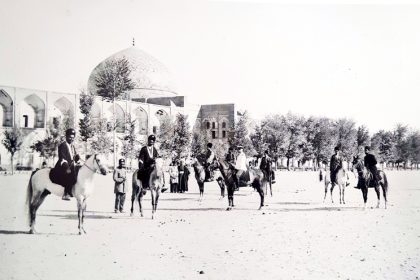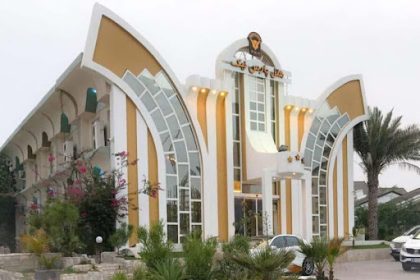Paris is a busy and bustling city, but in the midst of this presence Luxembourg Park It shows us a completely different face of this city. A park with unique features that has eye-catching views and a charming atmosphere. If you have read the famous novel Les Miserables, you will be interested to know that this park is exactly where Cosette met Marius and Victor Hugo described this picture as beautifully as possible. Statues of French queens and several historical monuments are part of the attractions you will see in Luxembourg. Here we will talk more about the history and guide to visit this extraordinary park.
If you are tired of the hustle and bustle of Paris and are looking for a quiet place to relax, we recommend Luxembourg Park. This park with green trees, colorful flowers, hundreds of small and large sculptures that showcase the creativity of Parisian artists, several historical attractions and a very attractive walking path is popular with tourists. Europe tour and the country of France is placed. Therefore, be sure to include the name of the Luxembourg Garden next to the Louvre Museum, the Eiffel Tower, the Notre Dame Cathedral and the Palace of Versailles among the tourist attractions of Paris.
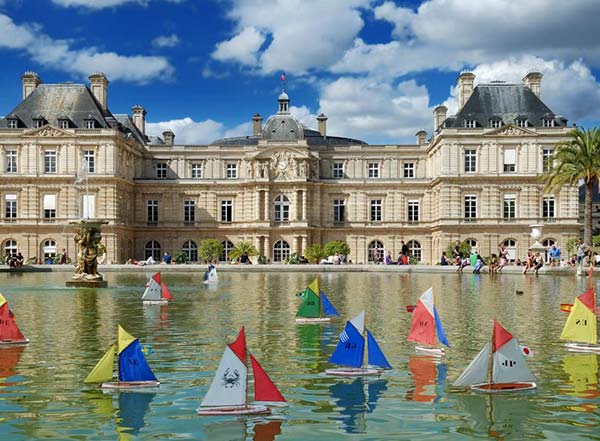
Luxembourg Palace Luxembourg Palace
The Luxembourg Palace is a very beautiful building located in the middle of the park and is considered one of the most famous tourist attractions in France. This palace has an interesting history and has always played an essential role in French political decisions. It can be said that the main story of the palace begins in 1615 when it belonged to Marie de’ Medici, the mother of Louis XIII. Marie lived in this palace until 1645; But with the French Revolution, the magnificent building of Luxembourg became the monopoly of the Parliament. In the meantime, parts were added to the palace and expanded to the building and became more modern. Since 1985, the Luxembourg Palace has become the location of the fifth house of the French Senate.
History of Luxembourg Park Jardin du Luxembourg
The year 1611 can be considered as the birth of Luxembourg. In this year, Henry IV’s wife ordered a palace similar to the Petit Palace in Florence, which was her birthplace, to be built for her in France. French architects also put in all their efforts, and as a result, the magnificent building of Luxembourg was built in the midst of a green environment; But he still could not attract the queen’s attention. A year later, he asked the gardeners to build 2000 trees around the garden and provide him with an atmosphere similar to what he had in Florence. The land around Florence was gradually added to it until 1630, and in the following years, statues and other buildings were gradually added to it.
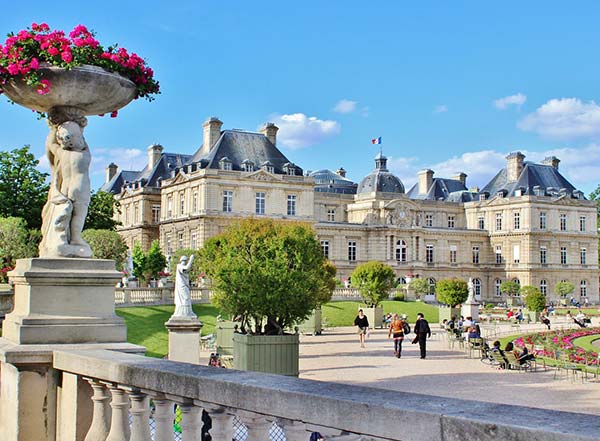
Fun in Luxembourg Park
Luxembourg Park has an area of 23 square meters. This 23-hectare space contains various attractions and entertainment. Roaring springs, magnificent resorts, lush trees and most beautiful of all the statues particle for direct object It can be considered one of the main attractions of Luxembourg. In this park, you can have a great walk or sit under the shade of trees and enjoy its great atmosphere, go to see sculptures and see the works of famous French artists, if you are into sports, tennis courts and chess tables are ready to improve your skills. challenge and finally, if you are traveling with your children, go to the special section for children and have a good time. Visiting the museum located next to the palace is one of the other entertainments in Luxembourg.
Read more: Visiting the Palace of Versailles in Paris, know these tips + visit guide
The green space of Luxembourg Park Paris
Green space is the most image that you can enjoy in Luxembourg Gardens. This garden is full of towering trees that offer their shadows to tourists and flowers that fill the space with their fragrance. The interesting thing is that all these trees and flowers are placed next to each other in a special order and this order has multiplied their beauty. Among other attractions of the green space of the park, C Medici fountain can be mentioned. This fountain was designed and built by the famous artist Tommaso Francini. In the 13th century, the C Medici fountain was completely destroyed and rebuilt in 1811 by order of Napoleon Bonaparte. This time, the French architect Arc de Triomphe was responsible for designing the fountain.
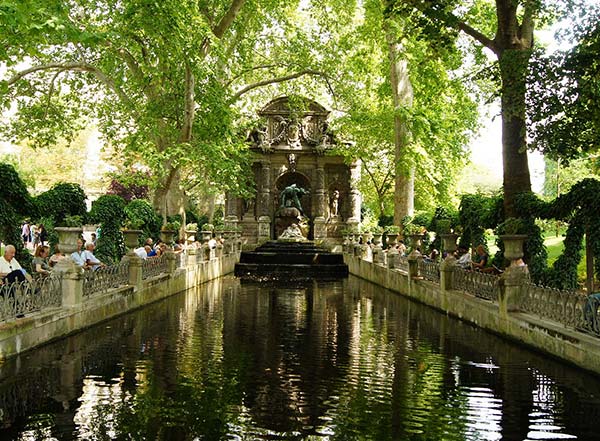
Sculptures and tourist attractions in the Luxembourg Gardens of Paris
The statues occupy a huge part of the Luxembourg Park, and of course, their presence attracts many tourists to the park. These statues mostly belong to famous ladies and French queens and are mostly made of marble. In front of the Luxembourg Palace, there are 20 statues and a large pond, which is very popular with visitors. The sculptures are made so beautifully and delicately that they can keep you occupied for hours. While visiting Luxembourg, in addition to visiting the statues, you can also visit the rose garden and use the tennis and chess courts to play.
Statues of famous writers and poets in Luxembourg
Plants are only part of the complex. In the garden, there are also 102 sculptures that can be seen on the paths and streets, turning Luxembourg into a real open-air museum. The statue of countless French and European writers and poets can be seen in the park. You can see Verlaine posing on top of a pillar, looking out over a garden of carnations and tulip beds. Baudelaire is standing in the shade of a sweet chestnut tree, and a little further away, Jose Maria de Heredia and Countess Sigurd are watching the winding streets of the English garden.
A little further, you come to the former librarian of the Senate, Lecomte de Lisle. George Sand, Stendhal, Flaubert, Saint-Beuve, Montesquieu and Zweig are other famous sculptures in the park. But in the meantime, none of these statues with the size of Marie de’ Medici have adorned the garden, because all these famous literary people were born long after her death!
Most of the sculptures in the garden are from the 19th century, which represents the peak of the flourishing of art in this century, and each one is recognized in its place as a symbol of the link between art and Luxembourg. Along with writers, sculptors such as Delacroix, Inger, David, Millet and famous musicians such as Beethoven, Chopin and Massenet can also be seen.
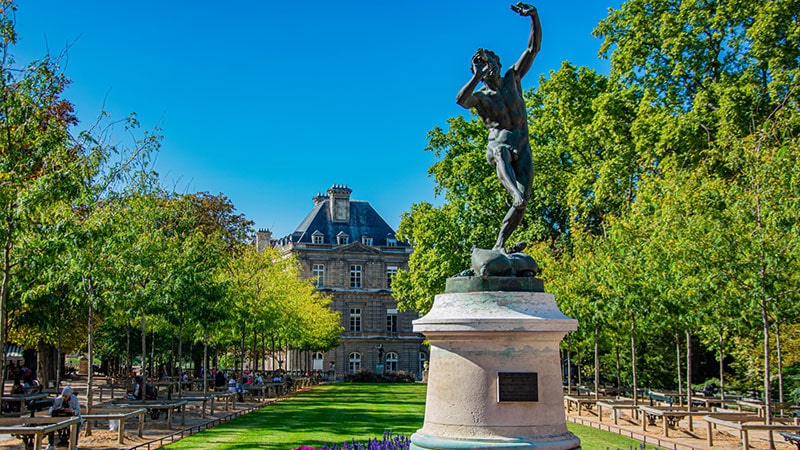
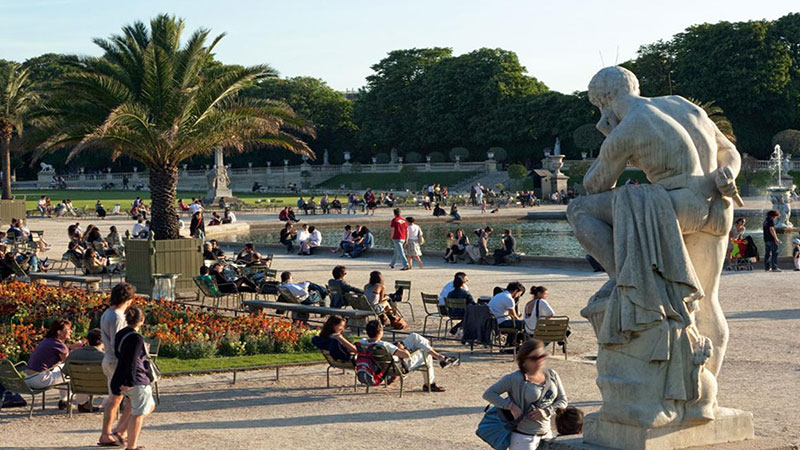
A collection of statues of aristocratic women in Luxembourg
On the east and west terraces of Luxembourg Park are twenty statues that make up the group known as Reines de France et Femmes Illustres (Queens of France and Illustrious Women).
Most of these famous women were from the ruling nobility of Badr France, and the most prominent of them is the statue of Clemens Isor, who founded the poetry contest Les Jeux Floraux at the end of the 15th century. Importantly, the sculptures, created by various sculptors in the second half of the 19th century, are essentially academic in style, but choosing an all-female group for that period was a bold move.
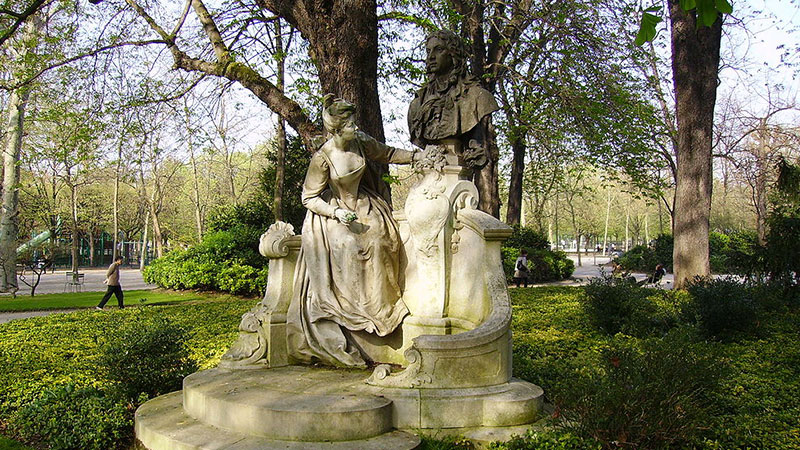
Other Luxembourg Park sculptures
Other more recent works have more political or memorial significance. One example is the memorial to the student resistance fighters by Gaston Watkin (1916-2011), which is based on this verse from the Partisans song: “Friend, if you fall, a friend will rise from the shadows to take your place.” Another is Le Cri, l’Écrit by Fabrice Heiber (b. 1961), made in 2007.
Another political figure is the statue of Pierre Mendes of France, whose statue was added to the lawn in the English garden in 1984. This statue overlooks the Grand Basin and is less known than the Sasser sculptures.
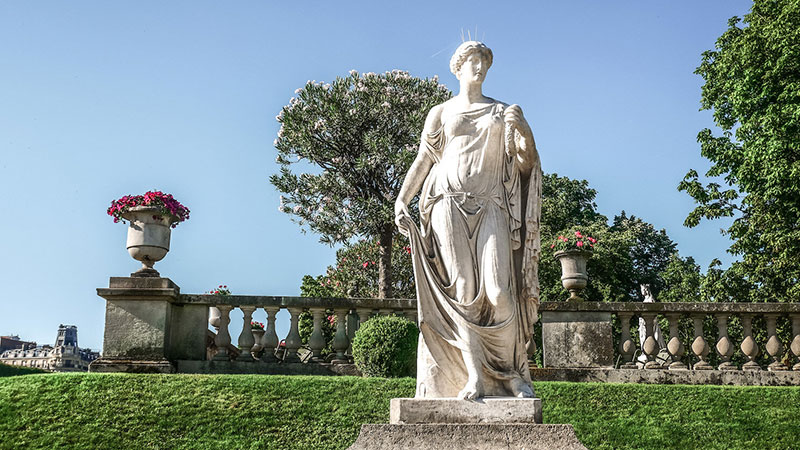
Read more: Introducing the Louvre Museum in Paris
Special entertainment for children in Luxembourg Park in France
Luxembourg also has special programs for children. In this park, there are several playgrounds for children, which are equipped with various entertainment. Your children can experience carousels, slides and horse rides in Luxembourg and even sit down to watch French puppet shows. The museum building, which is located next to the Luxembourg Palace, is one of the other attractions of this park. The works of contemporary French artists are exhibited in this museum, which we recommend visiting to those who are interested in art and architecture. You can visit the museum by buying a 10-euro ticket from 11:00 a.m. to 7:00 p.m.
- Kindergarten (from 14:00 to 18:00) from May to mid-September for children aged 18 months to 6 years.
- Playground (open from 10 am) for children 7 to 12 years old.
- Puppet theater: Wednesdays, Saturdays and Sundays from 14:00 and every day from 16:00 during school holidays. Horseback riding, swing, tennis, model yacht rental for sailing in the large pond.
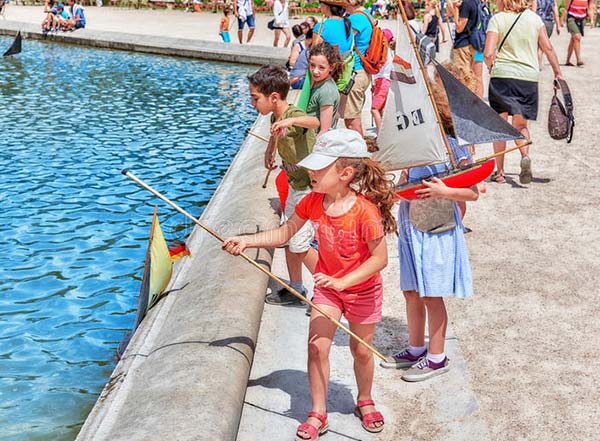
The famous fountain of Luxembourg Park
An iconic monument of the Luxembourg Gardens, the fountain was inspired by Marie de Medici’s childhood in Italy. Around 1630, Marie de Medicis created the Luxembourg Fountain, modeled after the fountains that adorned Italian gardens, and has since been known as the Medici Fountain. Thomas Francine, superintendent of the water and fountains, is said to have designed it. In 1862, the fountain was moved by Haussmann and moved about 30 meters closer to the palace.
The architect Alphonse de Gisours then built a fifty-meter-long basin in front of it and commissioned new sculptures from Autin.
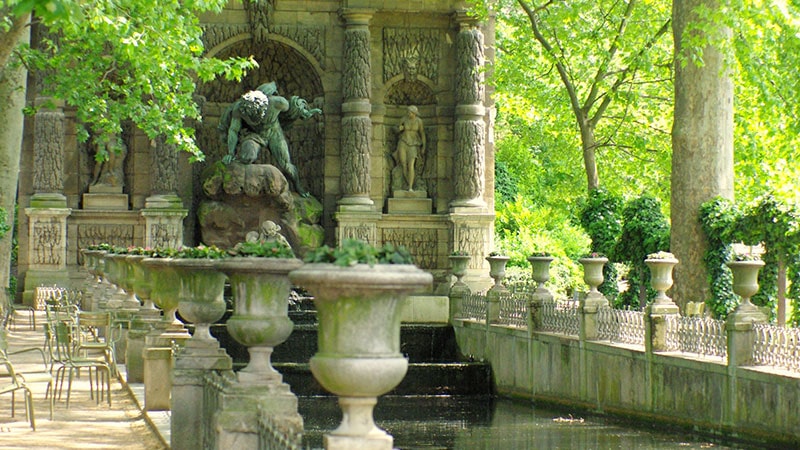
Luxembourg Museum
The Luxembourg Museum is located in the Luxembourg Palace and opened its doors to the public in 1750.
Visitors can see twenty-four paintings by Rubens, along with about a hundred paintings from the King’s Cabinet created by artists such as Leonardo da Vinci, Raphael, Veronese, Titian, Poussin, Van Dyck and Rembrandt.
In 1818, after these works were transferred to the Louvre, the Luxembourg Museum became the “Museum of Living Artists”, that is, the Museum of Contemporary Art. Artworks by David, Ingres, Delacroix and others were exhibited there.
Appointed as director of the Luxembourg Palace and Gardens in 1879, Senna built the current building between 1884 and 1886.
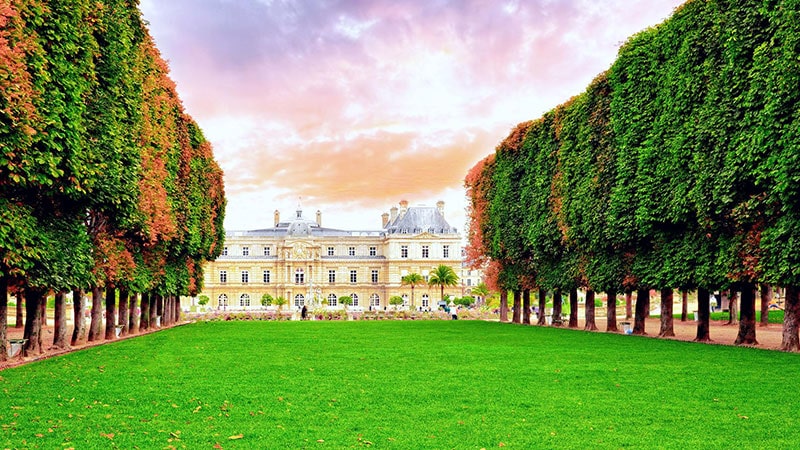
Luxembourg aqueduct
One of the important issues for Henry IV at the beginning of the 17th century was the supply of water to Paris. In this regard, the La Samaritaine pumping station was completed in 1608 and transferred water from the Seine River at the Pont-Neuf bridge. Louis XIII laid the first stone of the aqueduct in 1613. In addition to the Luxembourg gardens, this aqueduct fed fourteen other public fountains.
The Médicid aqueduct, managed by Eau de Paris, was reduced to ten kilometers and registered as a historical monument. Since 2017, in line with the sustainable development policy of the Senate, this garden is supplied with untreated water.
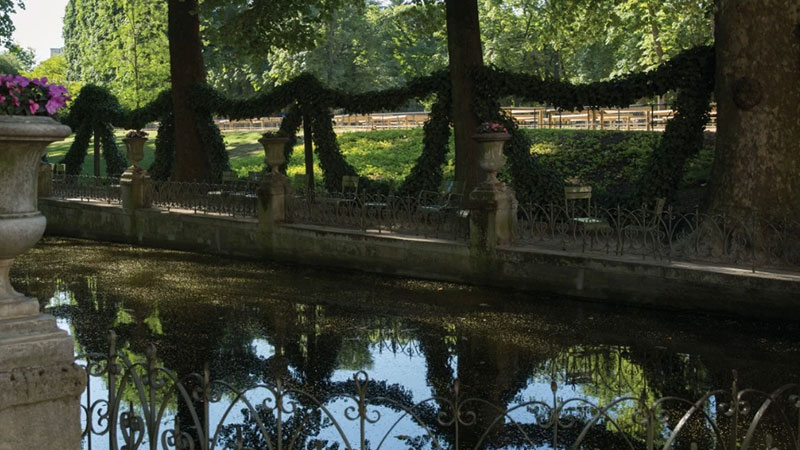
Read more: Paris Charles de Gaulle Airport The largest airport in France
Guide to visiting Luxembourg Park
Luxembourg Park is located on the left side of the Seine River in the 6th arrondissement of Paris. This park is open and ready to welcome tourists in the first half of the year from 7:30 am to 9:30 pm and in the second half of the year from 8:15 am to 4:30 pm. Considering the various attractions and entertainments that we got to know in the previous paragraphs, the hours you spend in the park and the choice of attractions are entirely up to you. You can visit the whole of Luxembourg in just half an hour or spend more time and visit this beautiful and spectacular garden. Of course, since Luxembourg is one of the largest parks in France, we suggest the second way.
Additional information about Luxembourg Park Paris
- Address: 75006 Paris, France
- Luxembourg Park Entrance Ticket: Entrance is free for everyone.
- Visiting hours: Luxembourg Park opens between 7:30 AM and 8:15 AM and closes between 4:30 PM and 9:30 PM depending on the season.
The Luxembourg Gardens are open on these holidays:
- ascension day
- August 15
- December 25
- Easter Monday
- Easter
- January 1
- July 14
- May 1
- May 8
- November 11
- on monday
Paris Luxembourg Gardens Tours
Guided tours of the garden are usually held on the first Wednesday of the month from April to October. You can visit the Jardin du Luxembourg website for the exact dates of the tours and more details. The starting point of the sightseeing tour in Luxembourg is usually in front of the gate of the observatory at 9:30 am.
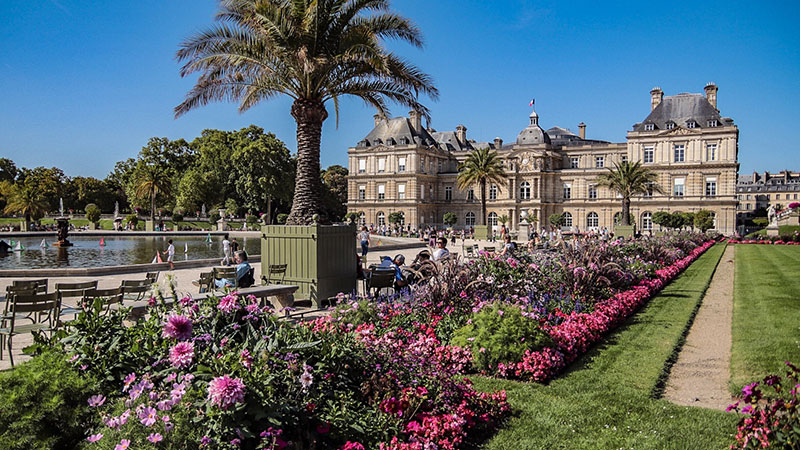
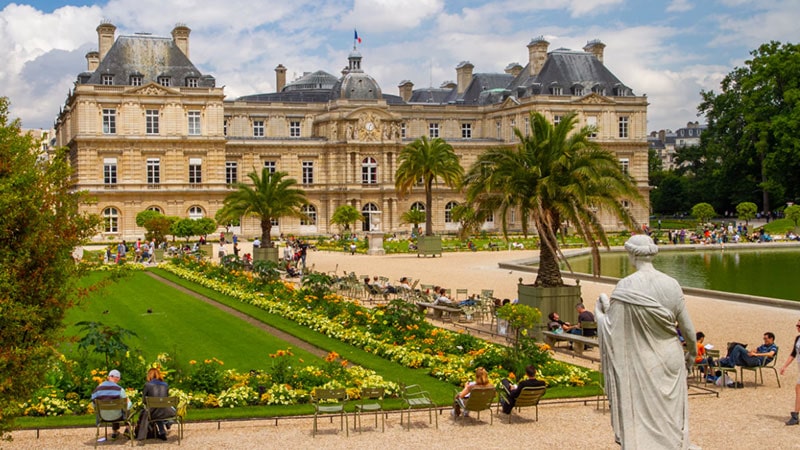
Attractions around Luxembourg Gardens
The attractions of the Luxembourg Garden are not limited to its space. Also, around the garden, there are hotels in the style of Gothic architecture and several restaurants and cafes that serve the best French food and coffee. In the following, we introduce other famous attractions of Paris that are located next to Luxembourg:
- Luxembourg Museum
- Sorbonne University
- pantheon
- St. Germain Church
- Notre Dame Cathedral
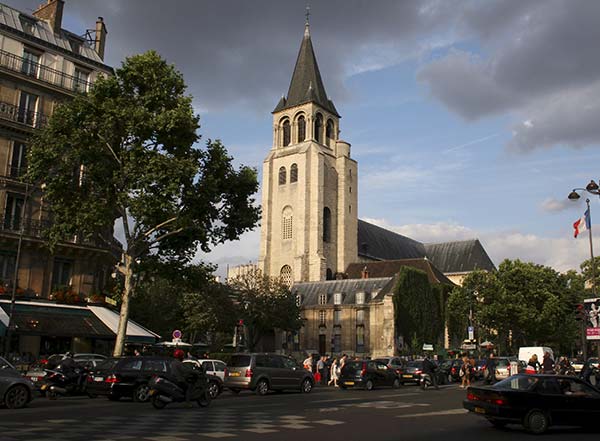
Final speech: Luxembourg garden; A manifestation of the calm face of Paris
The existence of the Luxembourg Park in the midst of the busy city of Paris can be seen as an opportunity to reach peace. The attractions of this park are so many and varied that people of all ages and tastes can enjoy walking in it. Finally, in order to obtain a Schengen tourist visa and book a French tour, you can contact our colleagues in the foreign tours department.
Copying of the contents of Setare Vanak Airline Agency is prohibited only by mentioning the source.
RCO NEWS















